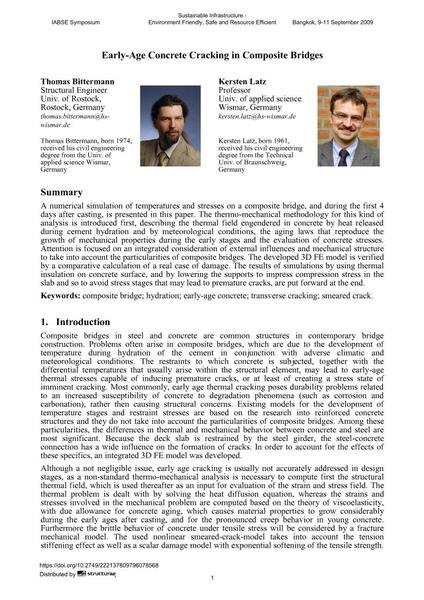Early-Age Concrete Cracking in Composite Bridges

|
|
|||||||||||
Détails bibliographiques
| Auteur(s): |
Thomas Bittermann
Kersten Latz |
||||
|---|---|---|---|---|---|
| Médium: | papier de conférence | ||||
| Langue(s): | anglais | ||||
| Conférence: | IABSE Symposium: Sustainable Infrastructure - Environment Friendly, Safe and Resource Efficient, Bangkok, Thailand, 9-11 September 2009 | ||||
| Publié dans: | IABSE Symposium Bangkok 2009 | ||||
|
|||||
| Page(s): | 92-101 | ||||
| Nombre total de pages (du PDF): | 8 | ||||
| Année: | 2009 | ||||
| DOI: | 10.2749/222137809796078568 | ||||
| Abstrait: |
A numerical simulation of temperatures and stresses on a composite bridge, and during the first 4 days after casting, is presented in this paper. The thermo-mechanical methodology for this kind of analysis is introduced first, describing the thermal field engendered in concrete by heat released during cement hydration and by meteorological conditions, the aging laws that reproduce the growth of mechanical properties during the early stages and the evaluation of concrete stresses. Attention is focused on an integrated consideration of external influences and mechanical structure to take into account the particularities of composite bridges. The developed 3D FE model is verified by a comparative calculation of a real case of damage. The results of simulations by using thermal insulation on concrete surface, and by lowering the supports to impress compression stress in the slab and so to avoid stress stages that may lead to premature cracks, are put forward at the end. |
||||
| Mots-clé: |
pont mixte
|
||||
